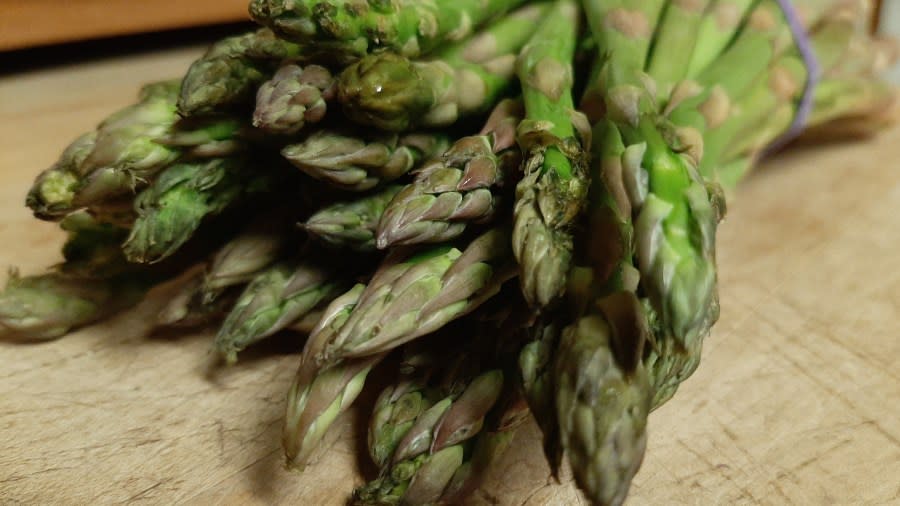It’s National Asparagus Day! All hail to the earth navel!

(WHTM) — On May 24th we honor the Asparagus. This stalky green veggie has been part of the human diet for millennia; it appears in Egyptian art dating from around 3000 B.C.E. While its origin is uncertain (as with so many things), it probably comes from the eastern Mediterranean and Asia Minor, where it still grows wild.
Get daily news, weather, breaking news and alerts straight to your inbox! Sign up for the abc27 newsletters here
The name asparagus has stayed the same for a long time, except when it hasn’t. The original word asparag, meaning sprout or shoot, is Persian. The Greeks and Romans added the “us” at the end. From medieval Latin, it wandered into English, and things started to get interesting. Asparagus replaced the Early Old English word for the plant, eorðnafela, which literally translates as earth-navel, which suggests the Anglo-Saxons had a lot of outies. (“ð”=”th”, for those of you wondering about pronunciation.)
Garden Guru: Growing asparagus
In late Old English, it got shortened to sparage. Then in Middle English, it got lengthened to asperages. By the 16th Century (We’re getting into “modern” English here) it was pronounced sperach or sperage–but was officially spelled (so far as there were official spellings in those days) asparagus. By then some people were calling it sparrow grass, which is either bad translation, good wordplay, or both.
When Europeans came to the New World, asparagus came with them. The Dutch were cultivating it in their New Netherland colony by 1655, and in 1685 William Penn included it in a list of crops that could grow in Pennsylvanian, in an ad for his new colony.
What’s that smell? Things you didn’t know you wanted to know about skunk cabbage
Over the years improved cooking technology, marinated in the cultural cross-fertilization that marks American cuisine, with just a dash of internet, has given us many new, different, and exciting ways of preparing asparagus. (A 1970s Betty Crocker Cookbook, which I still pull off the shelf for anything more complicated than boiling water, has exactly four recipes for asparagus. The 2021 Betty Crocker website has 239.)
The days when “boil it to death” was the standard way to cook asparagus seem to be fading into the past. No more must children face the trauma of trying to eat a soft, slimy, stringy, mushy stalk.
Today in history: Selinsgrove residents create world record banana split
You can serve Asparagus up as a side dish, or use it as an ingredient in the main course. It can be sautéed, fried, baked, cooked on a grill, boiled (if you don’t overdo it), or steamed. You can even eat it raw.
The health benefits of Asparagus are many. For starters, it’s very low in calories-about twenty in a serving of five spears. It’s high in fiber, and it’s packed with vitamins: A, B9 (folate), C, E, and K. There are also anti-oxidants like beta-carotene, manganese, selenium, and zinc.
There’s that smell again! More things you didn’t know you wanted to know about skunk cabbage
One of the nutrients in asparagus made scientific history. Asparagine, isolated from asparagus juice (hence the name) in 1806, was the first amino acid ever discovered. Later scientific research indicates asparagine helps the brain develop and function.
So the next time you want to add good taste and nutritional value to a meal, or are just in the mood for a healthy snack, consider the asparagus. It’s quick and easy to prepare, and you can roll the word eorðnafela around on your tongue while you get it ready.
Copyright 2024 Nexstar Media, Inc. All rights reserved. This material may not be published, broadcast, rewritten, or redistributed.
For the latest news, weather, sports, and streaming video, head to ABC27.

